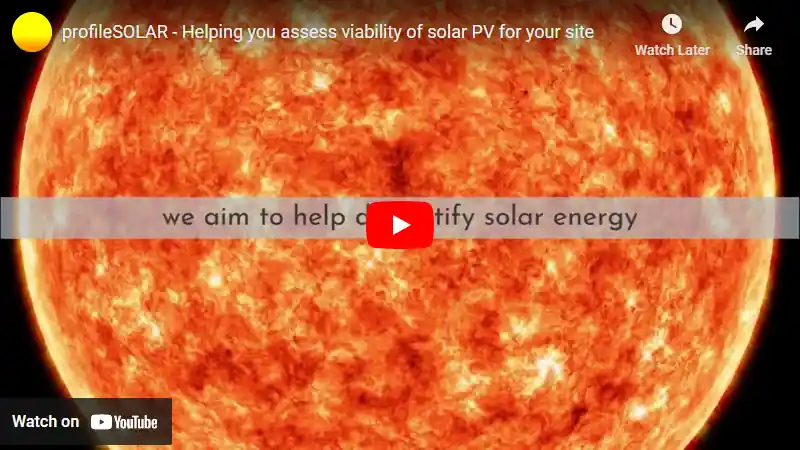

Chapel Hill, North Carolina, located in the United States, offers a moderately favorable environment for solar PV energy generation throughout the year. Situated in the Northern Temperate Zone at coordinates 35.9153, -79.0386, this location experiences distinct seasonal variations in solar energy production.
Seasonal Solar Energy Production
Solar energy output in Chapel Hill fluctuates significantly across the four seasons. Summer stands out as the most productive period, with an average daily output of 6.61 kWh per kW of installed solar capacity. Spring follows closely behind, generating 6.02 kWh/day. Autumn sees a noticeable decrease in production, yielding 4.45 kWh/day. Winter experiences the lowest output, with only 2.82 kWh/day. These figures indicate that Chapel Hill's solar potential is strongest during the warmer months, particularly from late spring through early fall. This period offers longer daylight hours and more direct sunlight, maximizing solar panel efficiency.Optimizing Solar Panel Installation
To maximize year-round solar energy production in Chapel Hill, fixed solar panels should be installed at a tilt angle of 32 degrees facing south. This optimal angle has been calculated considering the location's latitude and seasonal sun positions, ensuring the best overall performance throughout the year.Environmental and Weather Considerations
While Chapel Hill generally provides good conditions for solar energy production, there are some factors that could potentially impact efficiency: 1. Seasonal weather patterns: The region experiences occasional severe weather, including hurricanes and thunderstorms, particularly during late summer and early fall. These events can temporarily reduce solar output. 2. Tree coverage: Chapel Hill is known for its abundant greenery, which may cause shading issues for some properties. To mitigate these factors, consider the following preventative measures:- Install durable, weather-resistant solar panels capable of withstanding strong winds and heavy rainfall.
- Conduct a thorough site assessment to identify and address potential shading issues from nearby trees or structures.
- Implement a regular cleaning and maintenance schedule to ensure optimal panel performance, especially after storms or during periods of high pollen count.
Note: The Northern Temperate Zone extends from 35° latitude North up to 66.5° latitude.
So far, we have conducted calculations to evaluate the solar photovoltaic (PV) potential in 3076 locations across the United States. This analysis provides insights into each city/location's potential for harnessing solar energy through PV installations.
Link: Solar PV potential in the United States by location
Solar output per kW of installed solar PV by season in Chapel Hill
Seasonal solar PV output for Latitude: 35.9153, Longitude: -79.0386 (Chapel Hill, United States), based on our analysis of 8760 hourly intervals of solar and meteorological data (one whole year) retrieved for that set of coordinates/location from NASA POWER (The Prediction of Worldwide Energy Resources) API:




Ideally tilt fixed solar panels 32° South in Chapel Hill, United States
To maximize your solar PV system's energy output in Chapel Hill, United States (Lat/Long 35.9153, -79.0386) throughout the year, you should tilt your panels at an angle of 32° South for fixed panel installations.
As the Earth revolves around the Sun each year, the maximum angle of elevation of the Sun varies by +/- 23.45 degrees from its equinox elevation angle for a particular latitude. Finding the exact optimal angle to maximise solar PV production throughout the year can be challenging, but with careful consideration of historical solar energy and meteorological data for a certain location, it can be done precisely.
We use our own calculation, which incorporates NASA solar and meteorological data for the exact Lat/Long coordinates, to determine the ideal tilt angle of a solar panel that will yield maximum annual solar output. We calculate the optimal angle for each day of the year, taking into account its contribution to the yearly total PV potential at that specific location.

Seasonally adjusted solar panel tilt angles for Chapel Hill, United States
If you can adjust the tilt angle of your solar PV panels, please refer to the seasonal tilt angles below for optimal solar energy production in Chapel Hill, United States. As mentioned earlier, for fixed-panel solar PV installations, it is optimal to maintain a 32° South tilt angle throughout the year.
| Overall Best Summer Angle | Overall Best Autumn Angle | Overall Best Winter Angle | Overall Best Spring Angle |
|---|---|---|---|
| 20° South in Summer | 41° South in Autumn | 51° South in Winter | 29° South in Spring |
Our recommendations take into account more than just latitude and Earth's position in its elliptical orbit around the Sun. We also incorporate historical solar and meteorological data from NASA's Prediction of Worldwide Energy Resources (POWER) API to assign a weight to each ideal angle for each day based on its historical contribution to overall solar PV potential during a specific season.
This approach allows us to provide much more accurate recommendations than relying solely on latitude, as it considers unique weather conditions in different locations sharing the same latitude worldwide.
Calculate solar panel row spacing in Chapel Hill, United States
We've added a feature to calculate minimum solar panel row spacing by location. Enter your panel size and orientation below to get the minimum spacing in Chapel Hill, United States.
Our calculation method
- Solar Position:
We determine the Sun's position on the Winter solstice using the location's latitude and solar declination. - Shadow Projection:
We calculate the shadow length cast by panels using trigonometry, considering panel tilt and the Sun's elevation angle. - Minimum Spacing:
We add the shadow length to the horizontal space occupied by tilted panels.
This approach ensures maximum space efficiency while avoiding shading during critical times, as the Winter solstice represents the worst-case scenario for shadow length.
Topography for solar PV around Chapel Hill, United States
Chapel Hill, located in North Carolina, sits in a region characterized by gently rolling hills and wooded areas. The town is situated in the Piedmont region, which forms a transitional zone between the flat coastal plain to the east and the more mountainous Appalachian region to the west. The topography around Chapel Hill features a mix of low hills, shallow valleys, and numerous small streams and creeks that wind through the landscape. The elevation in and around Chapel Hill varies, but generally ranges from about 250 to 500 feet above sea level. This undulating terrain creates a picturesque setting, with many areas offering scenic views of the surrounding countryside. The region's topography has played a significant role in shaping the development of Chapel Hill and nearby communities, influencing the layout of roads, neighborhoods, and green spaces.
Potential Areas for Large-Scale Solar PV
When considering locations for large-scale solar photovoltaic (PV) installations near Chapel Hill, several factors come into play. Ideal areas would have relatively flat or gently sloping terrain, minimal shading from trees or buildings, and good access to existing power infrastructure. The areas to the east and southeast of Chapel Hill, as the land transitions towards the coastal plain, may offer more suitable locations for large-scale solar PV projects. These areas tend to have more open, agricultural land with fewer hills and forests. The flatter terrain in this direction would provide better conditions for installing large arrays of solar panels and would likely require less site preparation. Another potential area for solar development could be found in some of the rural regions to the west and southwest of Chapel Hill. While still part of the Piedmont, these areas may have larger tracts of cleared land that could accommodate solar farms. However, careful site selection would be necessary to avoid areas with significant slopes or dense forest cover. It's important to note that any large-scale solar PV project would require thorough environmental and zoning assessments. The region's commitment to preserving green spaces and natural habitats would need to be balanced with the desire for renewable energy development. Additionally, proximity to existing power transmission lines and substations would be a crucial factor in determining the most economically viable locations for solar installations in the Chapel Hill area.United States solar PV Stats as a country
United States ranks 2nd in the world for cumulative solar PV capacity, with 95,209 total MW's of solar PV installed. This means that 3.40% of United States's total energy as a country comes from solar PV (that's 26th in the world). Each year United States is generating 289 Watts from solar PV per capita (United States ranks 15th in the world for solar PV Watts generated per capita). [source]
Are there incentives for businesses to install solar in United States?
Yes, there are several incentives for businesses wanting to install solar energy in the United States. These include federal tax credits, state and local rebates, net metering policies, and renewable energy certificates (RECs). Additionally, many states have enacted legislation that requires utilities to purchase a certain amount of electricity from renewable sources such as solar.
Do you have more up to date information than this on incentives towards solar PV projects in United States? Please reach out to us and help us keep this information current. Thanks!
Citation Guide
Article Details for Citation
Author: Aaron Robinson
Publisher: profileSOLAR.com
First Published: Thursday 31st of October 2024
Last Updated: Friday 1st of November 2024
Tell Us About Your Work
We love seeing how our research helps others! If you've cited this article in your work, we'd be delighted to hear about it. Drop us a line via our Contact Us page or on X, to share where you've used our information - we may feature a link to your work on our site. This helps create a network of valuable resources for others in the solar energy community and helps us understand how our research is contributing to the field. Plus, we occasionally highlight exceptional works that reference our research on our social media channels.
Feeling generous?

Share this with your friends!


Compare this location to others worldwide for solar PV potential
The solar PV analyses available on our website, including this one, are offered as a free service to the global community. Our aim is to provide education and aid informed decision-making regarding solar PV installations.
However, please note that these analyses are general guidance and may not meet specific project requirements. For in-depth, tailored forecasts and analysis crucial for feasibility studies or when pursuing maximum ROI from your solar projects, feel free to contact us; we offer comprehensive consulting services expressly for this purpose.
Helping you assess viability of solar PV for your site
Calculate Your Optimal Solar Panel Tilt Angle: A Comprehensive Guide
Enhance your solar panel's performance with our in-depth guide. Determine the best tilt angle using hard data, debunk common misunderstandings, and gain insight into how your specific location affects solar energy production.






